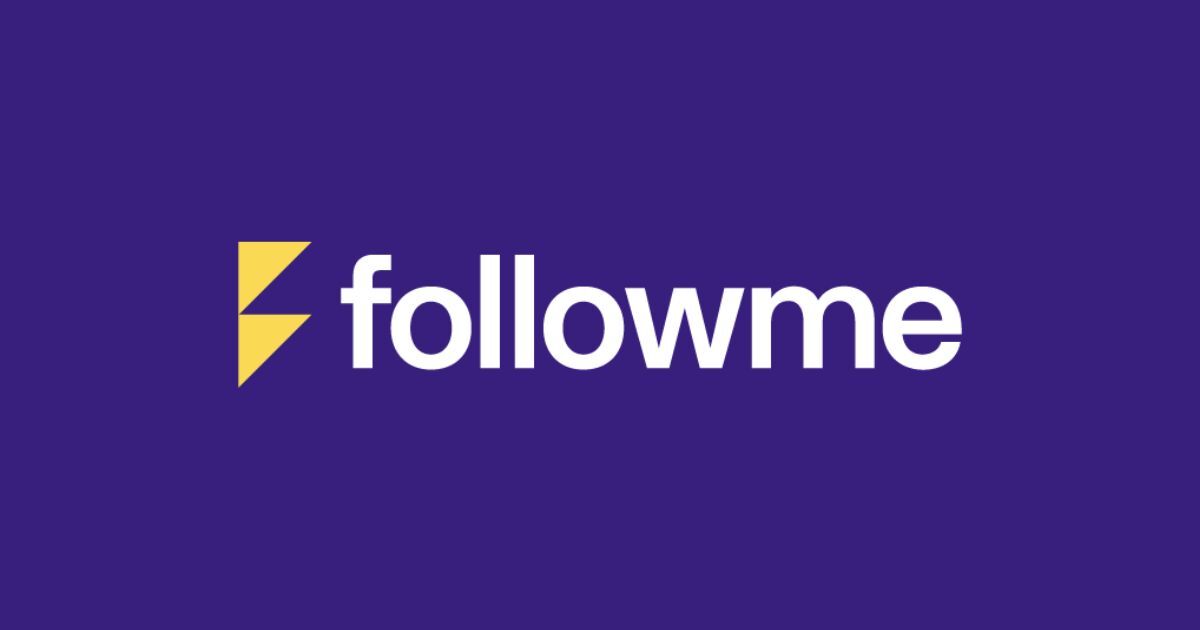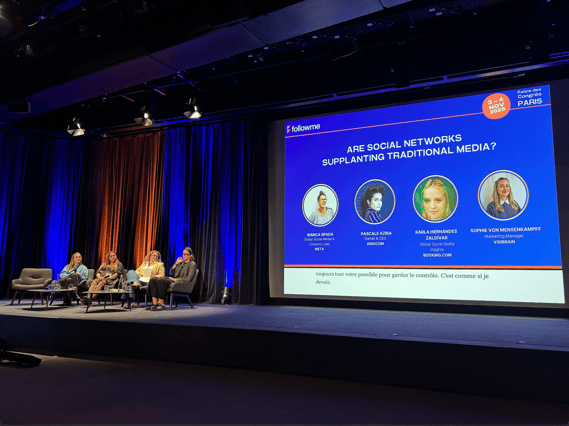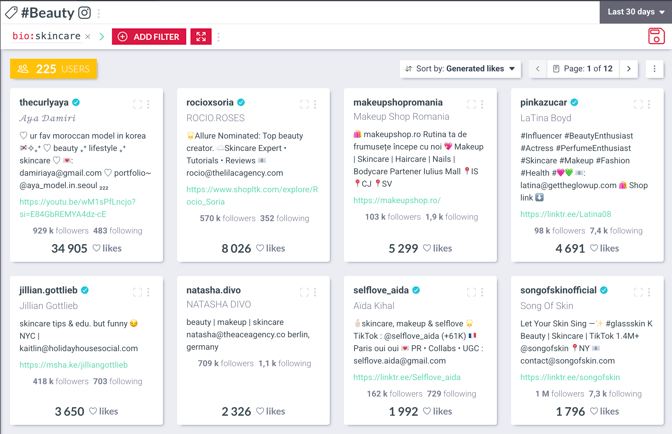Reputation Management
Effortlessly and accurately track the web and social network impact of your brand
Retour
Solutions
Reputation
Reputation Management
Effortlessly and accurately track the web and social network impact of your brand
Crisis Communication
Prepare, manage, and respond effectively to crises on social media and beyond
Leadership Advocacy
Amplify your leaders' voices to build trust and influence across key audiences
Influence
Trend Research
Uncover emerging trends to keep your brand ahead of the curve
Identifying Influencers
Find the voices that matter most to your audience and align with your brand goals
Campaign Tracking
Monitor, measure, and optimise your campaigns in real-time for maximum impact
Strategy
Competitive Intelligence
Gain actionable insights into your competitors’ strategies and performance
Industry Insights
Stay informed with real-time analysis of your industry’s landscape and shifts
Cyber Threat & OSINT
Detect and mitigate cyber threats with cutting-edge open-source intelligence
Retour
Why Visibrain
Why Visibrain
Our Coverage
The best coverage across the web and social networks
Our Technology
Our intuitive interface uses cutting-edge technology
Our Support
Our team is with you every step of the way
Featured
5 Easy Steps to choose the Right Social Listening Tool

Learn more
Retour
Clients
Our clients
Brands
Visibrain for brands
Institutions & Local Authorities
Visibrain for institutions and local authorities
Agencies
Visibrain for agencies
Success Stories
Discover how our clients use Visibrain
Client stories
How LVMH is using LinkedIn monitoring to boost its influence with Visibrain

Read the case study
Retour
Resources
Resources
Blog
Stay up to date
White Papers
Studies, industry analysis and advanced insights
Case studies
Our client stories
Help center
Guides and resources for users
Newsletter
Stay up to date with the latest Visibrain news!
Webinars
Our upcoming webinars.
Our Last Study
Visibrain Template: Brand Reputation Report

Download the full guide
Retour
About

Events
06/11/2025

Clémence Hutinet
Marketing manager
As audiences spend more than two hours a day on social platforms, the line between traditional and social media continues to blur. To explore this shifting balance, four communication experts gathered for a round table titled “Are social networks supplanting traditional media?”
The discussion featured Bianca Spada (Meta), Pascale Azria (Kingcom), Karla Zaldivar (Booking.com), and Sophie von Mensenkampff (Visibrain), who examined how trust, technology, and data are reshaping the information landscape.
The session opened with the question of credibility, and how public trust is built in a dual-media world. As Sophie von Mensenkampff (Visibrain) noted, “public trust can only truly be fostered when social media and traditional media line up.” When social voices amplify factual reporting, and reputable outlets validate viral content, credibility is reinforced. Yet, as AI tools such as ChatGPT become increasingly relied upon for information, tools that themselves depend on traditional media sources, their emergence is renewing the importance of journalistic rigour and transparency.

Karla Zaldivar (Booking.com) highlighted how social media has become a decisive factor in shaping political opinion, citing the influence of platforms during the Spanish elections and other global political races. She also drew attention to new regulatory shifts, such as China’s decision to restrict commentary on medical, financial, and legal matters to accredited professionals. This sparked debate among the panellists on the delicate balance between protecting information quality and enforcing censorship.
Pascale Azria (Kingcom) raised concerns about the ethical implications of such measures, underlining the need to preserve both creative freedom and public protection, a tension that continues to challenge brands, journalists, and policymakers alike.
The talk also addressed the need to rethink performance metrics. “Followers have become an obsolete metric,” explained Zaldivar. The rise of algorithmic discovery means visibility is no longer confined to those with the largest audiences. Instead, niche creators with high engagement and community relevance often outperform macro-influencers. This shift calls for deeper social listening, to uncover the conversations, communities, and emerging voices that truly shape perception and brand reputation.

(Visibrain platform - example of micro-influencer sourcing in the skincare industry)
Bianca Spada introduced Meta’s latest innovation: smart glasses that merge the digital and physical worlds. The discussion evolved into a broader reflection on responsibility and ethics in technology. She also outlined the measures Meta has implemented to promote safety and transparency, from content labelling to user education, reminding the audience that innovation must go hand in hand with accountability.
Closing the session, Sophie shared how social listening platforms like Visibrain help brands anticipate and manage crises in real time. She identified three key warning signals: an unusual acceleration in mentions or engagement, the spread of a topic across multiple platforms, and its eventual pickup by traditional media. “When a story jumps from TikTok to LinkedIn or X, that’s a sign it’s about to reach a wider, more influential audience,” she explained. Combining these indicators allows brands to react before reputational issues escalate, a crucial advantage in today’s fast-paced media cycle.
The consensus across the panel was clear: social and traditional media are no longer adversaries but interdependent forces. Newsrooms are embracing social strategies, while influencers are adopting journalistic approaches. As the boundaries blur, the key to success lies in collaboration and in understanding how information travels between the two worlds. In this landscape, social listening emerges as an essential compass for any organisation navigating credibility, crisis, and communication in the digital age.
NEWSLETTER
Subscribe to our Newsletter
Receive the latest in social listening, straight to your inbox
NewsletterNewsletter
.png?width=1090&height=1330&name=CTA%20newsletter%20(1).png)